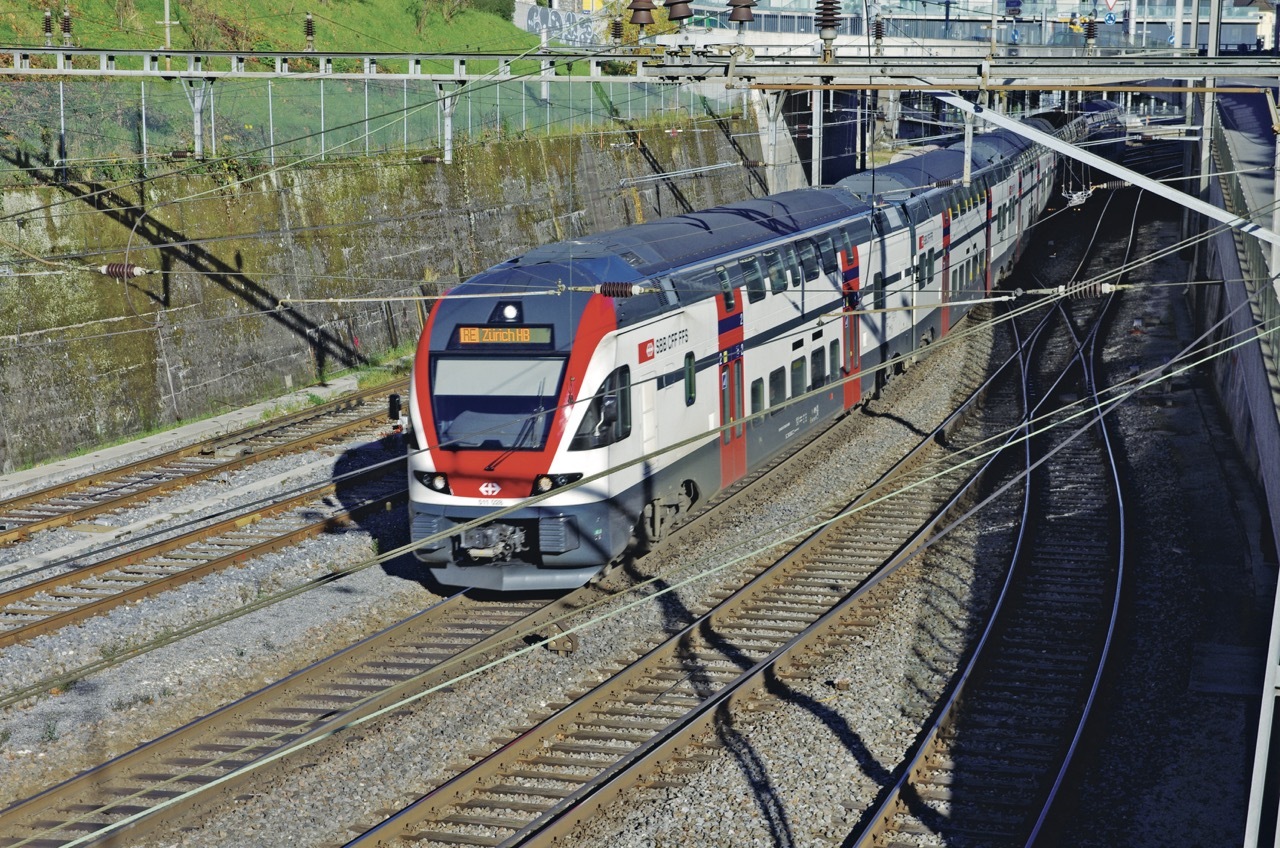
MOBILIITY
SLOW TRAFFIC: OUT AND ABOUT ON FOOT AND BY BIKE
The bicycle is a popular means of transport in Switzerland. Cycle paths are well sign-posted or marked yellow on the roads to ensure greater safety for cyclists on the roads. It is recommended that you take out liability insurance that insures you against injuring other people or damaging property when you are on your bike. Additional rules apply to e-bikes.
Those who are out and about on foot should also be safe in traffic. Pedestrians fundamentally have right of way on zebra crossings. Children who walk to school become more confident, have social contact and daily exercise. The Schaffhausen traffic police teach kindergarten and schoolchildren how to behave properly in traffic.
PUBLIC TRANSPORT
In Switzerland, there is a well-developed and efficient public transport network that also includes small municipalities. The rail, bus and boat timetables are synchronised. Many travellers prefer the train for travelling longer distances and commuting to work or school. There are various offers and travel cards which make public transport reasonably priced to use. The “Halbtax-Abo” (half-price travel card) is particularly popular, enabling public transport to be used for half price. Children under the age of 6 travel free of charge. Older children up to the age of 16 can travel free of charge with the Junior Ticket if accompanied by a parent, or free of charge with the Children’s Co-Travel Card when accompanied by another adult. In some municipalities you can purchase low-cost day travel cards for all of Switzerland.
Schaffhausen regional transport
It is only a short journey for people who want to travel from the country into the city of Schaffhausen (and vice versa). Rail or bus connections are available in every municipality. For people who want to travel in a more tranquil setting, various boat connections are available on the Rhine. The Schaffhausen region is grouped in a tariff network called OSTWIND. In a tariff network, there is a one-zone tariff; the passenger can then travel on all lines in the zones purchased with one single ticket during the validity period. This means that no new ticket has to be bought when the passenger changes over from rail to bus if the corresponding zone has already been purchased.
DRIVING A CAR IN SWITZERLAND
Licence and traffic safety
Foreign licences are valid in Switzerland for one year from the date of entry. You must apply to the cantonal department of road transport and shipping during this period for a Swiss driver’s licence. Find out about the valid traffic regulations in Switzerland!
Obligation to purchase a “vignette” (motorway toll disc)
A “vignette” is obligatory for travel on motorways and limited access roads. The “vignette” can be purchased from Customs posts, post offices, petrol stations, garages and TCS offices (association that represents the interests of drivers in Switzerland) and from the cantonal road transport offices.
Motor vehicle insurance
Third-party liability insurance is obligatory for all motorized vehicles, such as cars, motorcycles, mopeds and e-bikes up to 45 km/h, and also ships. Motor vehicle insurance can be supplemented with various additions.
Import of foreign vehicles into Switzerland
When you enter Switzerland and import a car from abroad, you must register your vehicle immediately with the Swiss Customs office. Vehicles do not have to be registered in Switzerland in the first twelve months from your entry if the foreign plates are valid and you have insurance cover.
People who, however, have resided in Switzerland for more than a year must register an imported vehicle in Switzerland. All motor vehicles and trailers must be officially tested before they are registered for use on the roads in Switzerland. Please enquire early on at the cantonal road transport department about registration requirements and the necessary documents.
AIR TRAVEL
Zurich-Kloten international airport is close by and can be quickly reached. The journey only takes around 30 minutes by car and a direct train connection to the airport takes 40 minutes. There are flights from Zurich to virtually every important business centre every day. The airport itself is easily accessible by public transport. It is possible to check in directly at Schaffhausen railway station. You can also get your boarding card there.
CROSS-BORDER TRAVEL – CUSTOMS PROVISIONS
It is tempting to go on excursions to neighbouring countries. Remember that you are crossing a national border and must take the corresponding documents with you. You can obtain information about Customs provisions from the Swiss Customs office.